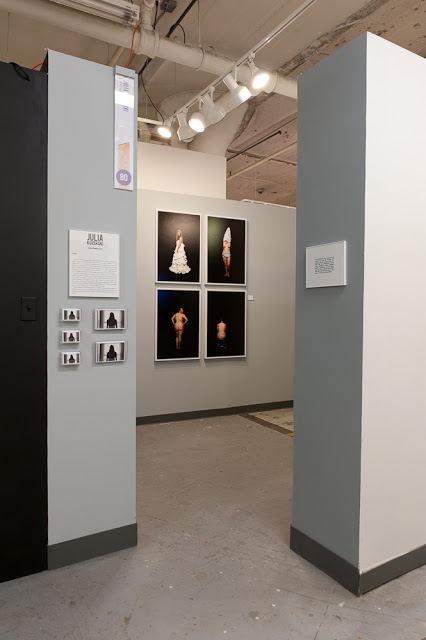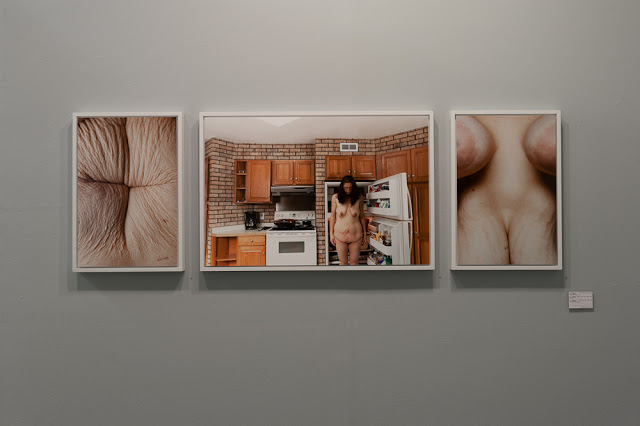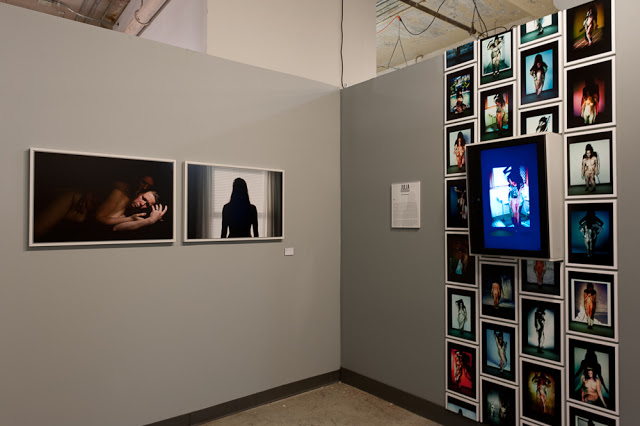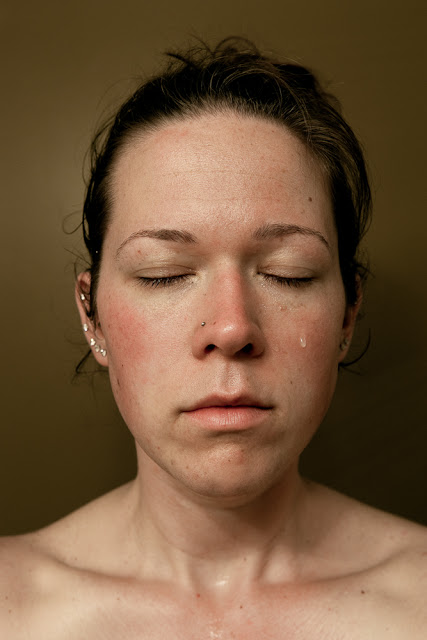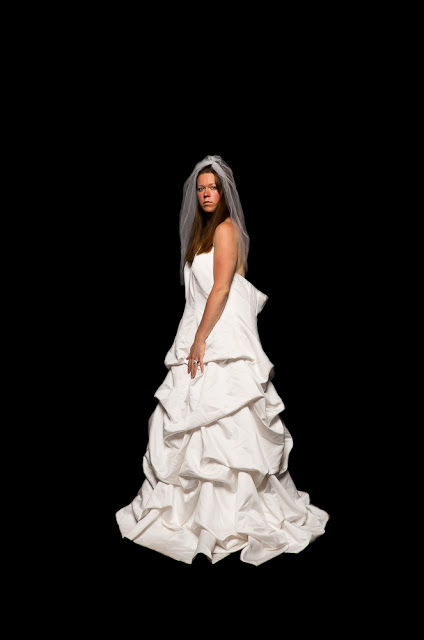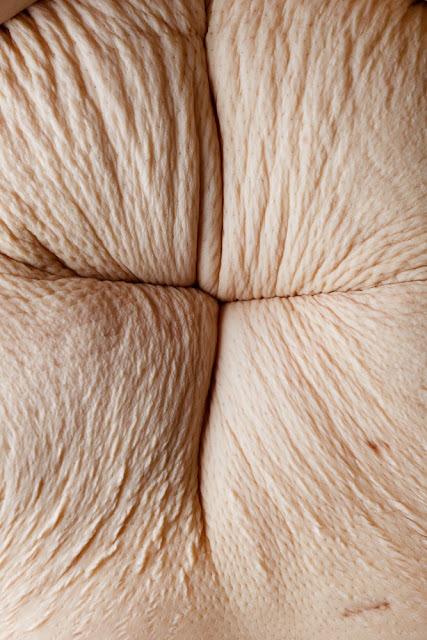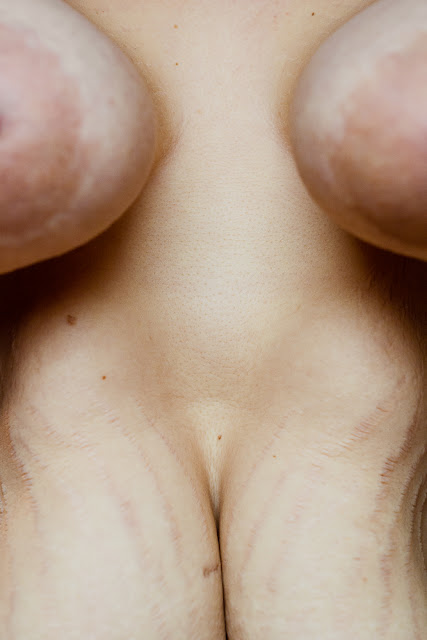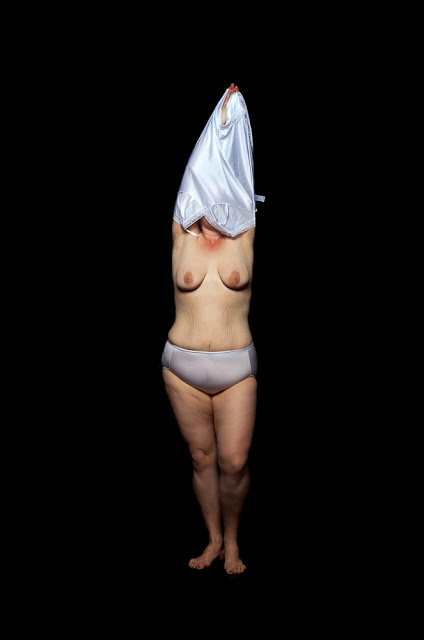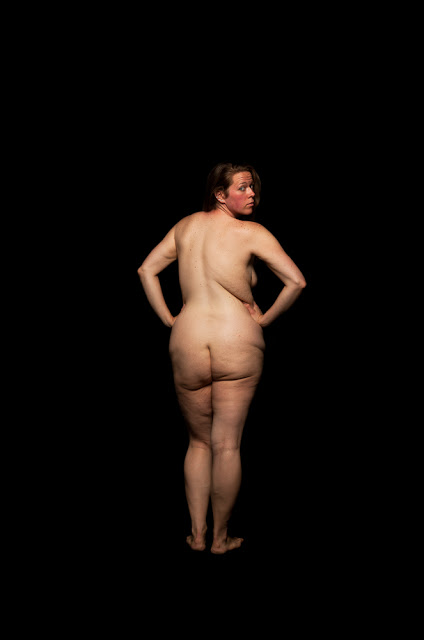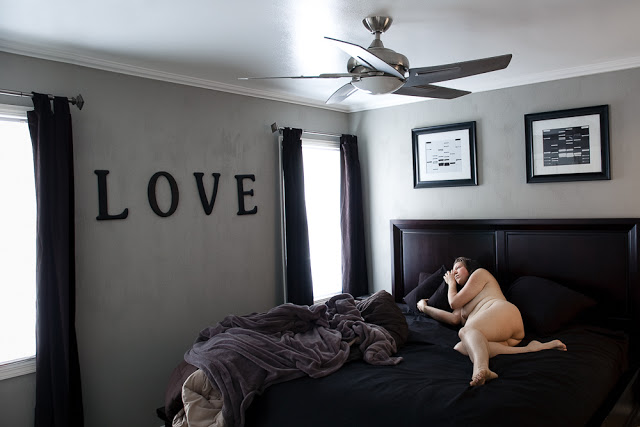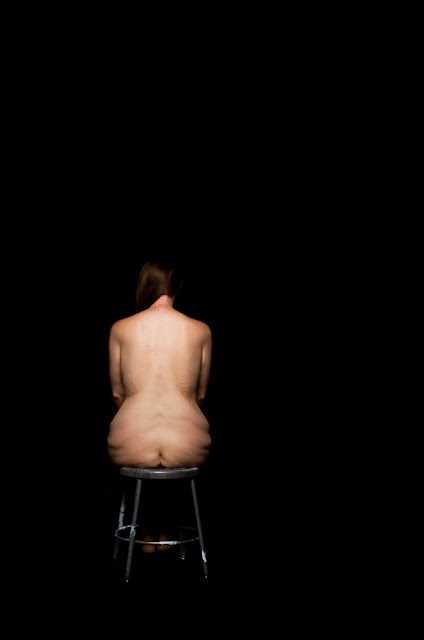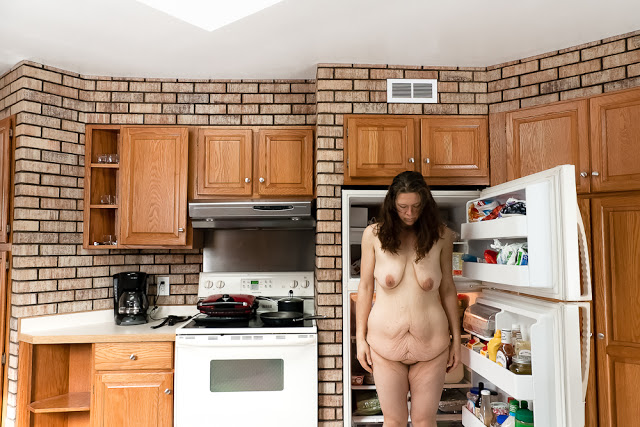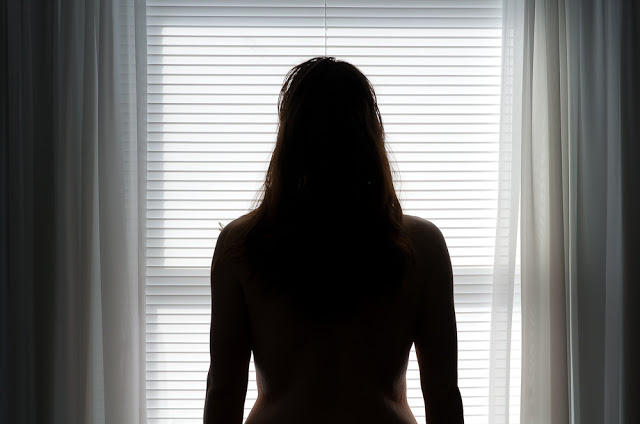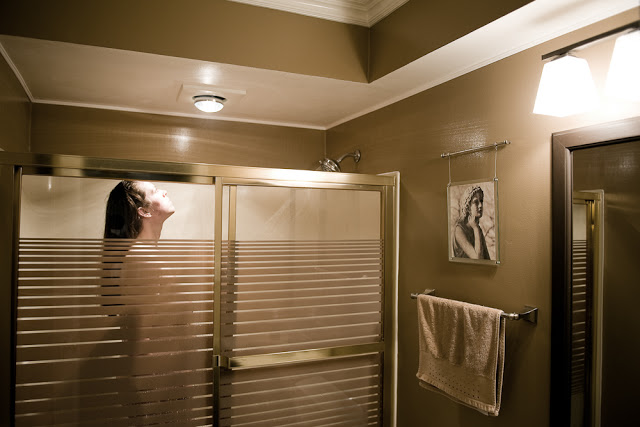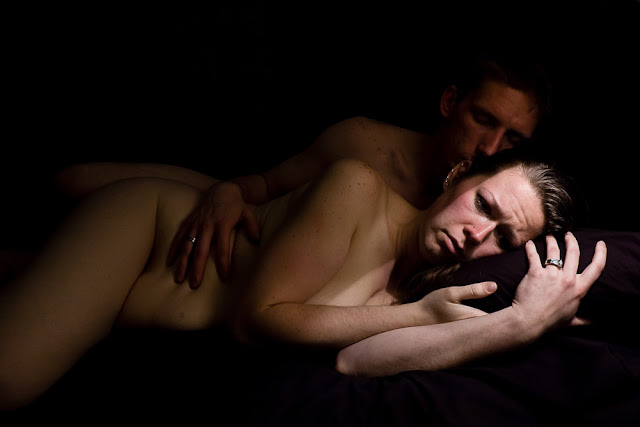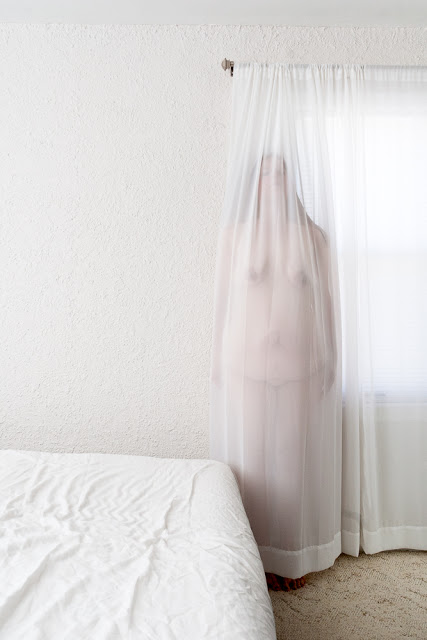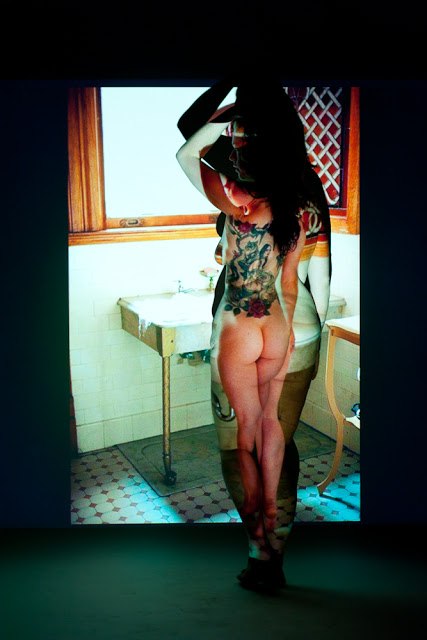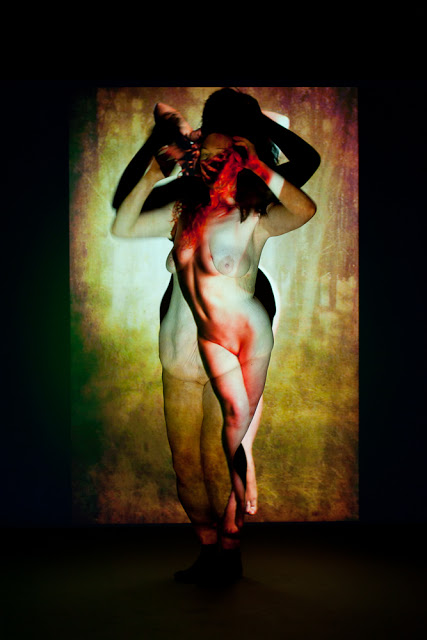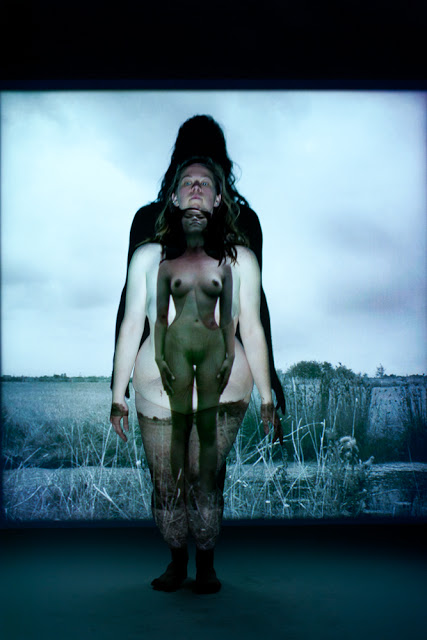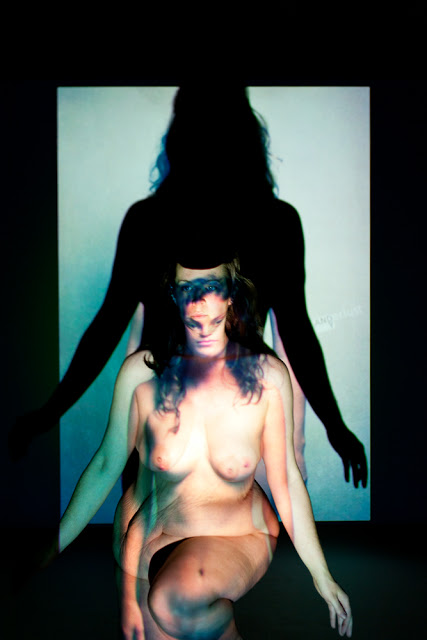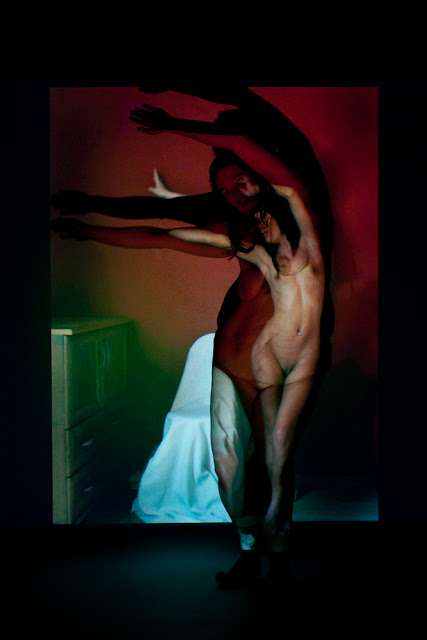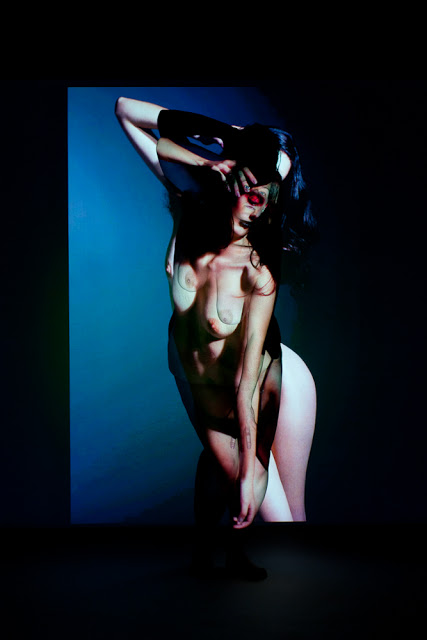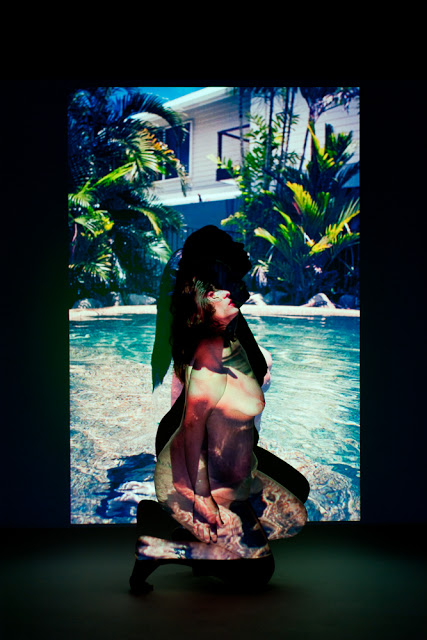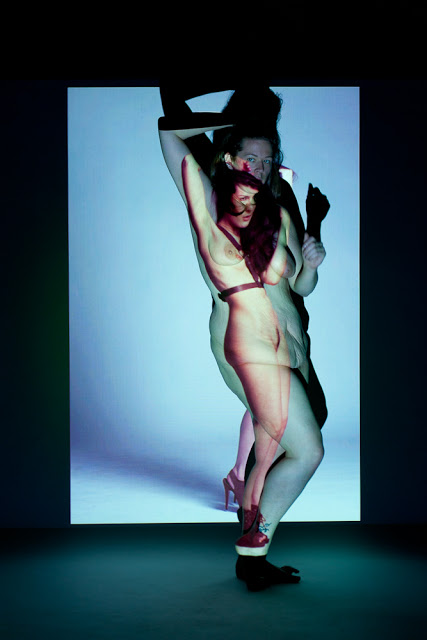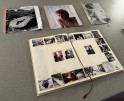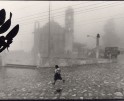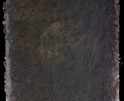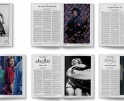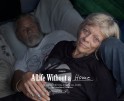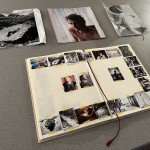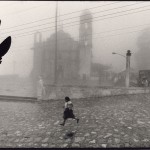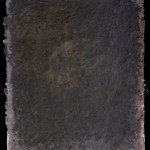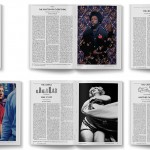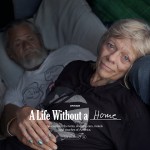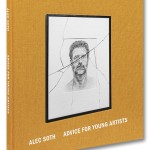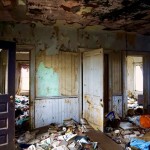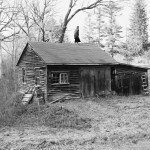The photographs of Julia Kozerski first came onto my radar when Fraction Magazine’s David Bram selected her photograph for the Juror’s Award in the Center of Fine Art Photography’s Food Exhibition. Director Hamidah Glasgow also selected Julia’s work for the Director’s Award, and it was a signal that this was work of interest. Last October, I had a chance to meet Julia, at the Filter Photo Festival in Chicago, and see her powerful and poignant work in person. Since that time her work has been featured in exhibitions across the country and she has received significant exposure on-line, including the CNN Photos blog. And this was all while an undergraduate at the Milwaukee Institute of Art & Design! After she picks up her diploma at the end of this week, she heads off to Review Santa Fe in early June to undoubtedly continue an amazing career as a fine art photographer.
I thought I would interview Julia at this pivotal point in her photographic journey and explore what has brought her to where is stands today. I will be featuring a few images from her Half project, and then introducing her new body of work, Tag.
Julia Kozerski’s BFA Thesis Exhibition
Interview with Julia Kozerski
I don’t know where to begin with my congratulations. But I will start with big kudos for completing your BFA! How does it feel now that the show is on the walls and all the effort over the last 4 years is a thing the past?
Thank you! I have officially completed all of my coursework and now anxiously await the “grand finale,” walking across the stage at our graduation ceremony on May 12.
My undergraduate education was turbulent to say the least. In that time, I got married, purchased my first home, cared for the health of my parents, lost over 160 pounds, underwent emergency surgery, and, most recently, witnessed my mother’s passing. Despite these obstacles, I attended full-time, and will proudly graduate with honors. None of these occurrences are ideal at any stage in one’s life but I have begun to appreciate the fact they happened to me during a time when I was learning to see and understand the world in creative new ways. Because of this, I think I was more willing to openly investigate the circumstances (rather than suppress or ignore them) and embrace my experiences, allowing them to fuel my visual explorations.
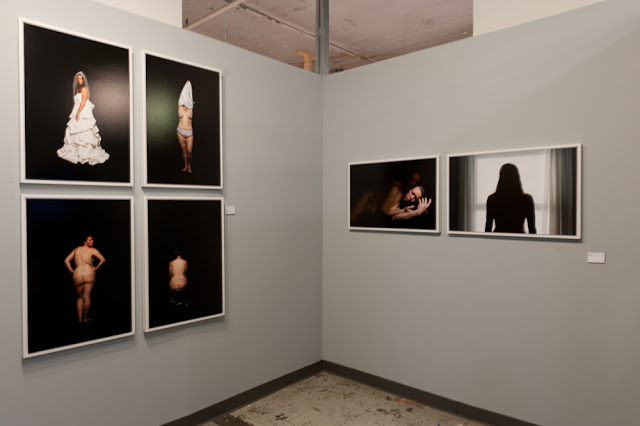
My BFA thesis has been on display for the last month. My exhibition has provided not only a capstone and closure to my hard work over the last 4 years (technically 5 years since I was forced to withdraw my junior year off to care for my parents,) but it has also given me a platform to assert myself an “artist” rather than just as a “student.” It also has provided a platform to share my intensions going forward after graduation.
Before starting the project that would change your life in so many ways, what were you creating with photography?
I’ve always had something to say and was never one to make purely aesthetic artwork. Before beginning “Half,” I was exploring a wide variety of subjects, always with the intent of inciting social commentary. Through my photography, I’d worked with themes surrounding identity, body-image, religion, politics, the economy, and LGBTQ issues. I was also working three dimensionally.
So, let’s get down to talking about the “body” of work that has put you on the map, and in much better health, Half. When did you decide to create a photographic project about this journey?
In December 2009, just after my wedding, I started a journey towards better health. I was in school at the time and thought that I could explore some of the issues and questions that had arisen from this personal experience for my class assignments. For a length of time, I used my photography to speak about our society’s misguided notions of nutrition – mainly addressing ideas surrounding fast food. I even explored my weight-loss in a more tongue -and-cheek fashion by addressing certain aspects in my Humor in Contemporary Photography class.
Eventually I came to realize that what I was talking about could be better understood, related to, and appreciated by the viewer if I stopped speaking abstractly and started speaking to my personal experience. The first images I shared in class critiques were those up-close, detail images of my skin (titled “Casing No. 1,” “… No. 2,” and “… No. 3.”) I was lucky to be part of a class of professors and students that understood what I was enduring outside of the classroom and I was encouraged to continue forward with my exploration. As I began to become more comfortable sharing nude images of my body in public, I pulled the camera out – teasing the viewer with silhouettes of my figure and then, eventually, exposing myself (no holds bared) to the truth of my experience and it’s affect on my physical and emotional well being.
Developing “Half” was a gradual process, spanning 2 years, and, in the end, I found that the process functioned very much as a catharsis. Through my images I was able to capture moments in time which were fleeting. Photographing allowing me the necessary time to stop and process what I had gone through and be able to speak about it in more concrete way. Looking back, I don’t think I chose to create this project – I let my life dictate my visual explorations.
What did you learn as a photographer, and as a person from this project?
Creating “Half” was probably as equally as important to my personal life as it was to my professional/photographic life.
Through its development, I learned the importance of honesty (not to be confused with that intangible element of “truth” in photography.) By honesty, I am referring to commitment. I might not have envisioned the full extent of the project or where it would eventually take me, but I was dedicated to opening myself up in very vulnerable ways and ready to sacrifice my privacy for (what I believe to be) a greater cause. Just as I was wholly committed to improving my health, from the first shots taken, I knew that I wanted (needed) to talk about this subject and that I wanted to raise awareness and insight conversation in a more public forum. Becoming honest with myself despite the fear of ridicule and failure was a huge step. In this, I learned to relinquish certain aspects of control.
Because it was based around such a very private, personal experience, I anticipated the need to push my own limits of comfort as well as that of the viewer. Early on I vowed to go at this all or nothing – I couldn’t imagine only exploring aspects in which I felt comfortable. With regard to “Half,” there are still images and conversations stemming from images which make myself and others cringe. In that way, I find my endeavor to be successful. This project gave me permission to push my boundaries, both behind and away from the camera.
Gut (no pun intended) also played a huge roll. Because my body and my emotional and mental state were constantly in flux, I had to make concrete decisions about images knowing that if I chose not to shoot something, I couldn’t replicate it later on. Working “in the moment” was also part of this. Essentially I lived in front of the camera for two years because I wanted to photograph in “real” time, I wanted my appearance and display of emotion to be as genuine as possible. Overall, I am proud of this work and I have a greater respect and sense of pride and appreciation for my instinct.
Before this undertaking, I will admit to being a bit lost (both creatively and personally.) Not only was I was uncomfortable with myself physically but I was also filled with insecurity and self-doubt having felt overshadowed by the label of “student.” “Half” helped me find myself and aided me in finally realizing myself as a photographer.
Your work is on equal numbers of health and photography blogs and it’s not often that student work shows up on CNN online and receives thousands of “likes”. What was it like for you, having your work and story out in world were everyone has access to it…
One word: “incredible.” I am still in awe by the attention “Half” has received.
At first, I was mainly in a state of disbelief, mostly connected to comments about my “bravery.” For me, the process of my physical transformation was nothing “special.” Like almost everyone, I was simply working to improve upon things I was unhappy with in my life – I definitely didn’t pursue my journey as some monumental, attention-seeking act. Whether I’d photographed my progress or not, I was going to make the necessary changes I needed to improve my health.
It’s interesting now, to have people come up in person, excited to meet me. Or to receive emails from teachers saying their students had written reports or given presentations about me/my work for their classes. As artists, some (maybe most) of us have far off dreams of some level of success and/or personal notoriety but quickly come back to reality. Notions of fame never once drove or motivated this work and the truth is, I’m about as “normal” of a woman as it gets. A student, a wife, a sister, a daughter – I just happened to have struggled with self-image and wanted to share my experience with others who I thought might relate. I surely didn’t expect or anticipate my nude self-portraits to be hung in galleries and to go viral online.
And, once I was finally distanced and detached myself from the work itself, I still found myself bewildered by popularity of the work. For so long, I thought I was alone in my struggles. I don’t think I fully understood the gravity and importance of what I was exploring visually until it went public and I was flooded with the responses of viewers. I am beyond thrilled that the masses have connected with my work (both within the realm of the arts as well as within the general public) and that the images are generally understood and accepted, rather than censored. My images have been viewed all over the world and it has been empowering knowing that they can transcend not only the personal but can also function on a very universal level. The discussions and dialogues created by “Half” have only fueled my ambitions to continue to break boundaries with my work and to stimulate open and honest communication about issues surrounding our humanity.
To say the least, it’s been a wild ride thus far. . . and I wouldn’t change a thing!
Where was the first place you shared it, and did it make you nervous to do so?
“Half” began as “loose” images I presented for class assignments (although it was never part of an assigned project.) The series was very much in its infancy when I began tacking prints up on the wall during in-progress critiques. Of course, I was nervous at first, showing nude self-portraits to my classmates and teachers, but, the great thing was that I was enrolled at an arts-based college so I sheltered by a very supportive, “protective” environment. Everyone viewing the work had already been exposed to nudity through art history classes as well as our drawing classes (where we would study and sketch from live, nude models.) At that time, I was probably the only one in the room who was uncomfortable and even that was temporary.
Eventually, through those critiques, I began to understand that my images weren’t purely about me. It was then that I separated myself from the work, allowing me to view the use of my body purely as symbolism. After awhile I became comfortable with sharing my work outside of the classroom and started doing so by releasing select images to a limited, professional audience through submissions to calls-for-entry and other photography competitions. The next step to follow was posting the images on my website. Now, I’m comfortable and am not shy about sharing the images freely, however, this entire transition was a very gradual process, spanning the course of several years.
I can only imagine how the power of creating this work allows you to tackle anything with confidence. How have you managed to get your work so far out into the photography world while still being a student? I guess it’s the idea that when the work is significant, it doesn’t matter what the resume reads.
I’ve been hiding behind the label, “student,” for the last 5 years and I think it really held me back in certain cases. For a long time, I thought that, because I was in school, I couldn’t possibly make meaningful or important work. I was under the impression that I was “just” a student and no one cared about me or my work because I wasn’t a “real” artist. Realistically, art is art, no matter if/when you’ve had education or training. Art transcends. Language, age, race, disability. . . none of them matter. Art is equal opportunity at it’s purist. If you are interested in sharing your visual creations with the world (and when you feel ready) there is an audience. If what you are doing/saying is meaningful and important, you’ll go far.
The art-community is vast and it’s members are always seeking to support good work and one another. It is important to be active, you can’t hide away and expect to be “discovered.” I have a heavy online presence, networking through Facebook, Tumblr, and Twitter. I maintain my website, updating my “News” section weekly and sending email newsletters to alert people interested in my work of important events. (Please note that my contact list started with only friends and members of my family. . . and that’s okay.) A key part to getting your work “out there,” whether a student or not, is staying active. If you see someone’s work that you like, contact them. I send emails all the time letting people know that I saw their work somewhere and that I really responded to it. I congratulate other artists on their accomplishments. I read a lot and subscribe to online magazines and try to stay abreast of what is happening in the realm of photography as well as the art-world as a whole. Communication is key. You need to be open with yourself and with others. Don’t be selfish. Share. Be friendly. Be professional.
I believe a lot of my “success” has been due to putting myself out there, taking risks, and working hard towards a career as an artist (and of course being lucky in some cases.) For a long time, I thought being an artist/photographer was just about creating work. I was wrong. Being an artist is about operating as a business – more time will be spent behind the computer screen, on the phone, and filling out paperwork than it will be creating the work itself (unless, of course, you are super-duper lucky.) Don’t think that just because you are a student that you can’t be a part of the photo/art community. The walls of academia don’t mean much… we are all life-long-learners.
Was there something that took your work to the next level?
A little over a year ago, after becoming more comfortable with my work, I took a chance and submitted to a call-for-entry. Held through the Center for Fine Art Photography (C4FAP,) the exhibition theme was “Food” and it was juried by Fraction Magazine founder and editor, David Bram. It was the first time I’d submitted to anything and I was intimidated. Again, I saw myself as “just a student” so I figured I’d be written off immediately. I all but forgot about my entry when I received an email congratulating me on having my “Untitled” image selected for the show. While excited, I also secretly wondered if there was a mistake – maybe the email was sent in error, maybe no one else applied, or maybe, worse yet, my piece was selected out of pity (At the time, my resume was literally one line long, stating my educational experience.) Shortly after, I was contacted by the gallery to congratulate me on receiving an award – not just “an” award, the Director’s and the Juror’s awards. Both. This was the point in my career (thus far) that took things to the next level.
“Half” was still in development and I was still unsure about it’s (and my) future. Still, I decided to take a chance and made the drive to Colorado for the “Food” exhibition’s opening. Anyone in attendance at the event can attest to my timidness – I felt like a fish out of water. The experience changed me. I met so many people that evening, each of them with a comment or a question. It was the first time I’d publicly spoken about my feelings and my experience. It was good practice and prepared me for what would follow. I was encouraged to continue my exploration and was empowered by the fact that my single image, hung on the wall could elicit such personal responses from viewers. Strangers I’d never met shared intimate details and confessions about themselves and it was then that I knew that my work served a greater purpose.
One image, one submission, one juror, one experience – changed my life.
Images from Tag
Much of your work is about revealing the most intimate moments in your life. Do you feel a need to continue to share yourself at this point, or are you moving away from the lens?
Such a great question, and it’s one that I’ve been grappling with myself a lot lately.
I can’t say for certain whether or not I will be in front of the lens going forward. Much of my work is very experiential and it’s not often that I fully “plan” a series. Rather, I tend to live and let the images I take from my explorations dictate the projects themselves.
Whether or not images of myself are ever made public again, I will most likely be taking them. What I will say is that, like that in which I went through my physical transformation and photographed “Half,” I am now in a new stage of my life, following graduation. I have a lot of questions and concerns surrounding myself and my future (both personally and professionally) and see the potential for continued focus on self-portraiture as a means of catharsis. Again, whether I share the images or not remains to be seen.
I definitely don’t want to pigeonhole myself or confine my visual explorations to one theme or subject. I am open and willing to whatever comes my way and would welcome a departure from being my own muse if that is what is to be.
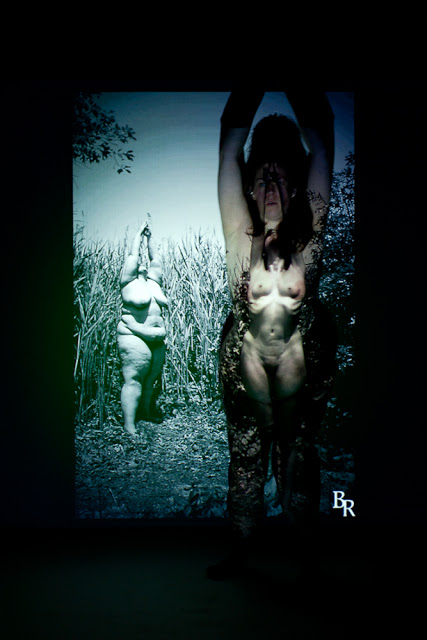
What’s next? . . . What isn’t next?
I’m continuing to exhibit images from “Half” nationally (with hopes of expanding my audience internationally) and will be participating in Review Santa Fe later this month. Other than that, I’m planning on making a lot of new work! I’ve recently become interested in time based media (video) and would like to continue to explore that artistic avenue. Never fear, I’ve also got some ideas for some photographic endeavors as well. Oh, and I’m also planning on applying to graduate schools next year. Eventually I would like to teach.
With no concrete plans to speak of, the name of the game is “onward.” Graduation is not a stopping point for me and I’m excited to see where the future takes me/my work. The only explicit plan I have going forward is that I will create. My guess is that I will stumble and fall on most of my artistic attempts, but, like most artists and photographers, I’m holding on to hope that something great will come of it.
So now that you are stepping into the real world, do you have any ideas for the future?
Lucky for me, I was an “older” student (graduating at 27 years old.) I’ve already had the experience of working in the “real world” and feel more prepared, I think, than some of my fellow classmates graduating from college.
Ideally, I’d love to think that I could make a living as an exhibiting artist/photographer but, realistically, given the economy and other outlying factors (repayment of student loans, etc.,) I don’t think that that is an option. Besides reentering the working world, I’ve been an active member of the creative photo community for some time and plan to continue functioning as so, while continue making personal work.
But. . . I will have to get a “day job.” (Anyone hiring?)
And finally, what would be your perfect day?
I’d turn off my phone and completely abandon my computer. My perfect day would begin by sleeping in as long as possible and, instead of being awoken by the violent buzzing of my alarm clock, I would be gently coaxed from my bed by the warm rays of sunshine streaming through my bedroom curtains. After breakfast, I would venture out into the summer heat, riding my bicycle (nicknamed Marilyn) on the trails along the edge of the lakeshore (or better yet, if I could move out West, I’d ride in the desert landscape.) With the beat of my favorite songs pulsing through my headphones, I’d return home for a light snack before heading back outdoors for some good old fashioned landscaping. I’d probably start out with mowing the lawn and finish up tending to my plants. Afterwards, I’d take a leisurely walk where’d I’d contemplate ideas and gain inspiration for photographs. Returning home, I’d spend hours shooting, eventually greeted greeted with a hug and a kiss from my husband. We’d share a plate of delicious Middle Eastern food before hoping in the car for a ride into the country (or desert) to watch a thunderstorm roll in. Afterwards, we’d retire to our home together and climb into bed for the evening – one last “I love you” before nodding off.
I think I’ll take a bike ride tomorrow.

